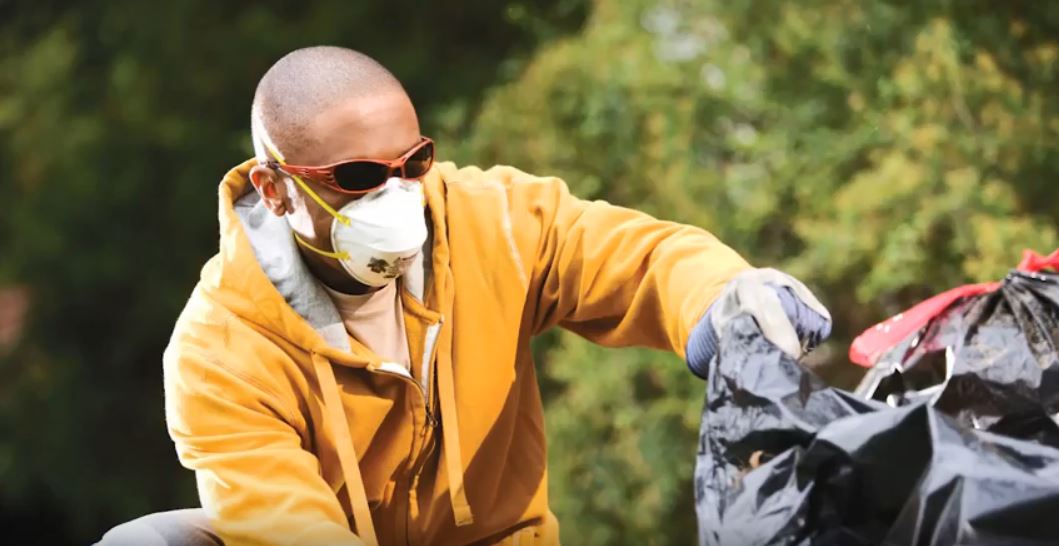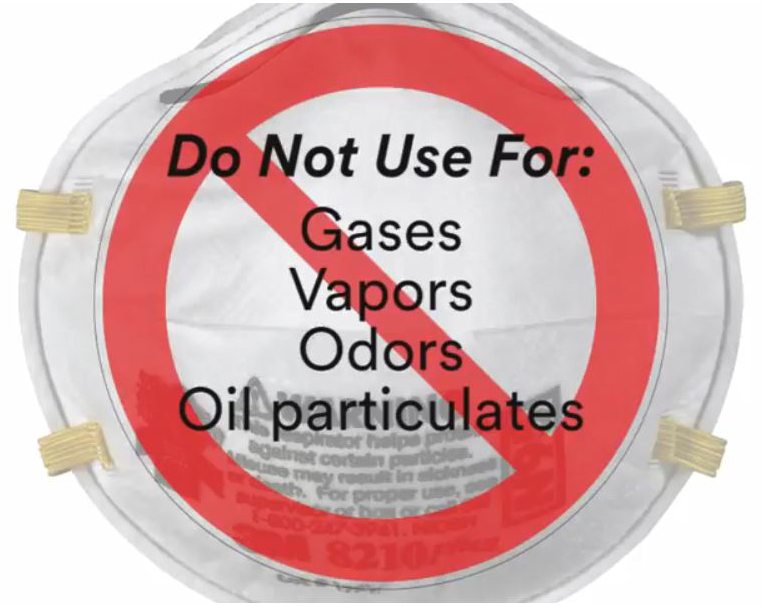 When it comes to knowing how to wear a disposable respirator mask, it’s important to study proper face application and seal checking.
When it comes to knowing how to wear a disposable respirator mask, it’s important to study proper face application and seal checking.
UPDATE, April 1, 2020: Due to the recent COVID-19 (coronavirus) outbreak and subsequent shortage in critical supplies, we recognize the current challenges faced by many industries in our nation in having adequate supply of personal protective equipment (PPE). We also believe that now more than ever, it is important to know how to properly place and inspect each mask while wearing to ensure each individual’s utmost safety.
Step-by-step: How to wear a disposable respirator mask
- Cup the respirator in your hand with the nose piece at your fingertips, allowing for the headbands to hang freely below your hand.
- Position the respirator under your chin with the nosepiece up. Pull the top strap over your head until it rests on the crown of your head, above your ears.
- Pull the bottom strap over your head and place it on the back of your neck, so it rests just below your ears.
-
- NOTE: Pinching the nose piece using one hand may result in an improper fit and less-effective respirator performance. Use two hands, and be sure to follow proper user instructions included with your respirator. Using both hands, starting at the top of the nose clip, mold the metal nose clip around your nose to achieve a secure seal.
-
How to properly remove a disposable respirator mask
- Cup the respirator in your hand to maintain the position on your face.
- Pull the bottom strap up over your head.
- Still holding the respirator in position, pull the top strap over your head and remove the respirator.
Important safety notes
- If the respirator mask becomes damaged, dirty or breathing becomes difficult, replace it immediately if resources are available. Please be cognizant of the supplies available within your facility to ensure others can stay protected as well.
- Perform a user seal check prior to each wearing. This is done by placing both hands completely over the respirator, then exhaling. Be careful not to disturb the position of the respirator.
- If air leaks around the nose, readjust the nose piece.
- If air leaks at the respirator edges, work the straps back along the sides of your head.
- If you cannot achieve a proper seal, do not enter the contaminated area if possible.
 Disposable respirator masks can be used for non-harmful dusts and certain particles encountered during sanding projects, such as bare wood, non-lead paint surfaces or drywall. It can also be used for sweeping, fiberglass installation, pollen, mold spores, gardening, cutting firewood, raking and mowing.
Disposable respirator masks can be used for non-harmful dusts and certain particles encountered during sanding projects, such as bare wood, non-lead paint surfaces or drywall. It can also be used for sweeping, fiberglass installation, pollen, mold spores, gardening, cutting firewood, raking and mowing.
Make sure to always use these masks in well-ventilated areas. Do not use this type of respirator for gases, vapors, odors or oil particulates, as well as toxic or harmful substances such as lead and asbestos.
This blog post was drafted in partnership with 3M.
Related posts
How to use a defibrillator: ZOLL AED Plus features voice instructions